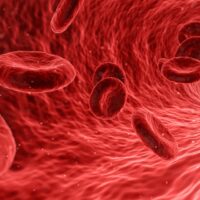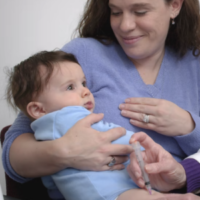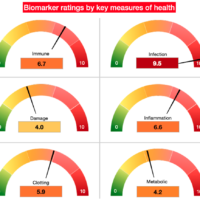This panel screens for important biomarkers for the damage caused by the mRNA vaccine constituents and the spike protein. These tests evaluate whole-body health and co-morbidities with emphasis on biomarkers know to elevate from spike protein damage to any bodily system.
- D-Dimer – micro-clot factor
- Troponin-T – heart muscle damage biomarker
- Creatine Kinase (CK) – tissue damage biomarker
- Lactate Dehydrogenase (LDH) – tissue damage biomarker
- Gamma-Glutamyl Transferase (GGT) – Liver health biomarker
- Antinuclear Antibodies – Autoimmune disease biomarker
- Immunoglobulins (A, G, & M) – for the differentiation of current or past infection
- Immune System (white blood cell counts)
- Electrical System (erythrocyte sedimentation rate)
- Inflammation (hs-CRP, fibrinogen, uric acid, red blood cell distribution width)
- Metabolic (fasting insulin, fasting glucose, HbA1C
- Liver function (liver enzymes)
- Kidney function (metabolites, kidney function efficiency)
- Lipid (triglycerides, HDL, LDL)
- Oxidative Stress (iron balance parameters)
- Thyroid Function (TSH, T3, T4, reverse T3, TPO and TP antibodies)
These markers help in performing a proper diagnosis of:
- Myocarditis
- Pericarditis
- Microvascular disease
- Inflammation
- Vascular complications caused by vaccine components, including the spike protein, have the potential to impact every tissue in the body. Tissue that either repairs slowly or is highly metabolic are most impacted.
- Neurologic problems
- Gastrointestinal complications
- Energy issues
- Joint issues and pain
Some examples include:
The heart. Your heart is always operating and is well know to rebuild very slowly compared to other tissue once damaged.
The brain. Your brain is ten-times more metabolically active compared to other tissue. The brain is supported by a vast microvascular network.
The eyes. Like the brain, this tissue is highly metabolic.
Athletes. Athletic individuals require more blood flow and create transient inflammation that may be exacerbated by the spike protein and mRNA technology.
The young. Young people have more vascular networks that support growth compared to older individuals.
Pregnant moms and their growing baby. Mom is supporting two lives, both with very active vascular networks.





Reviews
There are no reviews yet.